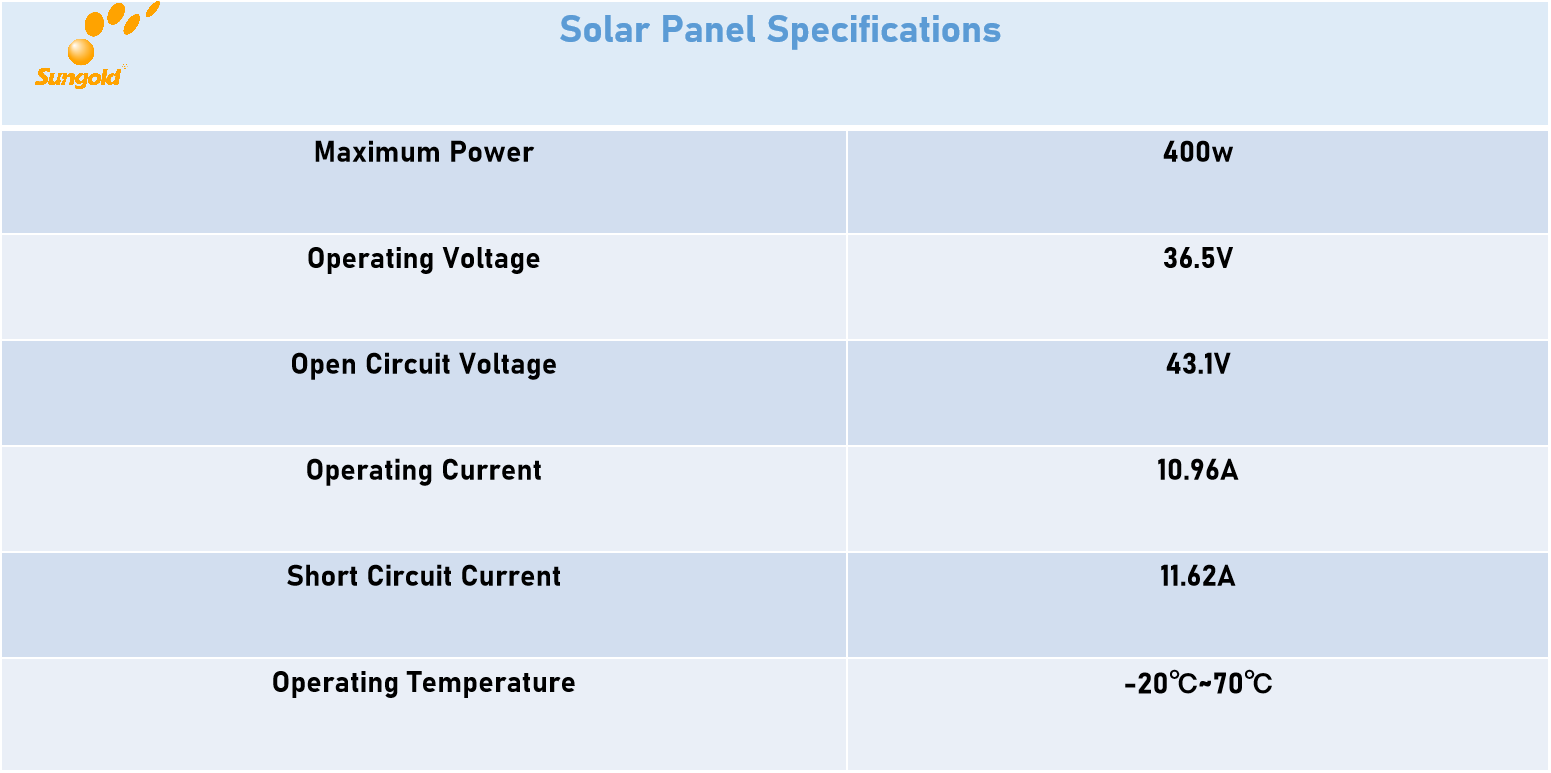When you get or see a solar panel specification sheet, are you confused and puzzled by some of the terms?
Solar panel specifications are some of the common electrical parameters and series performance given by the manufacturer under STC (Standard Test Conditions).
In this article, we will introduce the terms that will appear on the solar panel parameters to help you have a better understanding while buying solar panels.
What is STC?
STC (Standard Test Conditions) for solar panels is a standardized set of test conditions used to evaluate the performance of solar panels for comparison and normalization. Standard Test Conditions also means that solar panel testing is performed in an environment where.
Solar panels are tested with a light intensity of 1000 Watts per square meter (W/m²). This corresponds to the light conditions in the earth’s atmosphere when the sun is shining directly on the ground.
The temperature of the solar panel should be maintained at 25 degrees Celsius (77 degrees Fahrenheit). This temperature is used to simulate general operating conditions, although the temperature of the solar panels may vary in actual applications.
For STC conditions, the Atmospheric Mass (AM) value is set to 1.5. Atmospheric Mass represents the length of the path of sunlight through the atmosphere, and AM1.5 means that the light travels through an atmosphere with an atmospheric mass equal to 1.5.
Why are solar panel specifications necessary?
Solar panel specifications are important for evaluating the performance of solar panels and making comparisons between models because they provide a benchmark for performance under standardized conditions.
They can help consumers understand exactly how solar panels perform under different conditions. This includes performance metrics such as current, voltage, and power produced by solar panels under different light, temperature, and atmospheric quality conditions.
In addition to this, solar panel parameters are the basis for evaluating, selecting, designing, and maintaining solar energy systems, and play an essential role in ensuring the effective use of solar technology.
Solar panel specifications explained
Next, we will take Sungold’s solar panel parameters as an example.
Maximumum Power
Maximum Power is a key parameter of solar panels, often referred to by the acronym “MPP”, which stands for Maximum Power Point, the maximum amount of electrical power that can be generated by a solar panel under different operating conditions. Specifically, the Maximum Power Point is the point at which the voltage and current of the solar panel are optimally matched, so that the solar panecanto converts sunlight into electricity with the highest efficiency.
This means that this 400w solar panel can convert sunlight into electricity at the highest efficiency at STC and produces 400 watts of electrical power per hour.
Operating Voltage
Operating Voltage is the voltage level at which the solar panel operates. Solar panels will produce electricity at different operating voltages, depending on the design of the solar panel and how it is connected. Operating Voltage usually refers to the voltage at which the solar panel operates under actual working conditions (not under standard test conditions).
So this solar panel will produce about 36.5 volts under actual operating conditions.
Open Circuit Voltage
Open Circuit Voltage indicates the output voltage of the solar panel when no external load is connected. That is, when the solar panel’s wire port is not connected to any load circuit, the voltage it produces is called open circuit voltage.
Open Circuit Voltage 43.1V means that the solar panel produces an open circuit voltage of 43.1 volts (V) when there is no external load connected, usually under certain conditions.
Operating Current
Operating Current is the current generated by the solar panel under actual operating conditions (varying light, temperature, re, and load conditions). This current indicates the amount of electricity the solar panel is flowing through the circuit to produce electricity.
Operating Current 10.96A means that the solar panel produces 10.96 amperes (A) under actual operating conditions.
Short Circuit Current
Short Circuit Current indicates the maximum current generated by a solar panel under certain conditions, such as full exposure to sunlight, at a certain temperature, and in a short-circuit condition (where the two ends of the load circuit are connected to circuitry Circuit Current 11.62A means that a current of 11.62A can be generated under a short circuit condition.
Operating Temperature
Operating Temperature is the temperature range that the solar panel can withstand during normal operation.
This is very good to understand, that is, the solar module can be in minus 20 degrees to seventy degrees above zero under the normal operation of the environment.
Above are the typical parameters of solar panel specifications, hope it can help you better understand and buy solar panels. If you want to know more or want to add, welcome to contact us.












